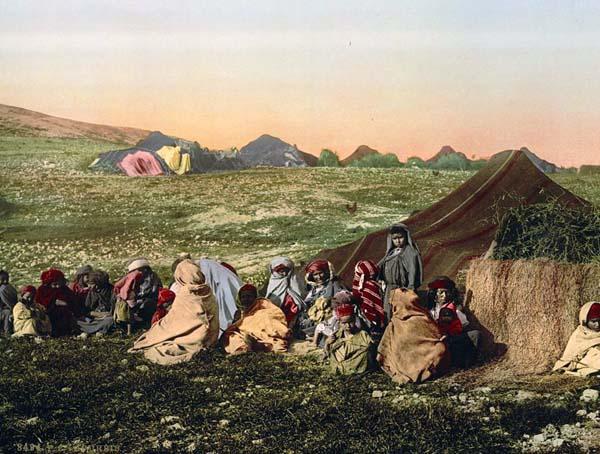Middle-range theory (archaeology) on:
[Wikipedia]
[Google]
[Amazon]
 In
In
 In
In archaeology
Archaeology or archeology is the scientific study of human activity through the recovery and analysis of material culture. The archaeological record consists of artifacts, architecture, biofacts or ecofacts, sites, and cultural landscap ...
, middle-range theory refers to theories linking human behaviour and natural processes to physical remains in the archaeological record
The archaeological record is the body of physical (not written) evidence about the past. It is one of the core concepts in archaeology, the academic discipline concerned with documenting and interpreting the archaeological record. Archaeological th ...
. It allows archaeologists to make inferences in the other direction: from archaeological finds in the present to behaviours in the past. Middle range theories are derived from ethnoarchaeology Ethnoarchaeology is the ethnographic study of peoples for archaeological reasons, usually through the study of the material remains of a society (see David & Kramer 2001). Ethnoarchaeology aids archaeologists in reconstructing ancient lifeways by s ...
and experimental
An experiment is a procedure carried out to support or refute a hypothesis, or determine the efficacy or likelihood of something previously untried. Experiments provide insight into cause-and-effect by demonstrating what outcome occurs when ...
research in combination with the study of taphonomic processes.
Background and application
The term was adapted byLewis Binford
Lewis Roberts Binford (November 21, 1931 – April 11, 2011) was an American archaeologist known for his influential work in archaeological theory, ethnoarchaeology and the Paleolithic period. He is widely considered among the most influe ...
. He conducted ethnographic fieldwork amongst modern hunter-gatherer
A traditional hunter-gatherer or forager is a human living an ancestrally derived lifestyle in which most or all food is obtained by foraging, that is, by gathering food from local sources, especially edible wild plants but also insects, fungi, ...
peoples such as the Nunamiut Eskimo, the Navajo
The Navajo (; British English: Navaho; nv, Diné or ') are a Native American people of the Southwestern United States.
With more than 399,494 enrolled tribal members , the Navajo Nation is the largest federally recognized tribe in the United ...
, and Aboriginal Australians
Aboriginal Australians are the various Indigenous peoples of the Australian mainland and many of its islands, such as Tasmania, Fraser Island, Hinchinbrook Island, the Tiwi Islands, and Groote Eylandt, but excluding the Torres Strait Islands ...
in order to understand the pattern of waste their activities generated. He then used this data to infer the behaviour of Palaeolithic
The Paleolithic or Palaeolithic (), also called the Old Stone Age (from Greek: παλαιός ''palaios'', "old" and λίθος ''lithos'', "stone"), is a period in human prehistory that is distinguished by the original development of stone too ...
hunter-gatherers from the waste they left in the archaeological record.
Binford and many of his contemporaries viewed the construction of middle-range theories as a fundamental first step in understanding how people in the past behaved. However, middle-range research has since been criticized as logically flawed. Its critics argued that it rested on the unjustified assumption that there is a uniform link between behaviour and physical remains that holds true throughout human history. Its conclusions were argued to be untestable because their application was founded on a tautology: evidence from contemporary peoples (e.g. modern hunter-gatherers) was asserted to be applicable to people in the past (e.g. Palaeolithic hunter-gatherers) because they behaved in a similar way, but that same evidence was used to reconstruct the behaviour of the past people.
Middle-range theory
The middle-range theory in archaeology is narrowly conceived in current conception and negated in use. Theory building began to gain tract in the late 1970s in the time ofNew Archaeology
Processual archaeology (formerly, the New Archaeology) is a form of archaeological theory that had its beginnings in 1958 with the work of Gordon Willey and Philip Phillips, ''Method and Theory in American Archaeology,'' in which the pair stated ...
and took several years to be a topic of critical interest. The concept is often misunderstood because of the multiplicity of the middle-range theory in another scholarly discipline – sociology
Sociology is a social science that focuses on society, human social behavior, patterns of Interpersonal ties, social relationships, social interaction, and aspects of culture associated with everyday life. It uses various methods of Empirical ...
. It is suggested in this approach that scientific knowledge becomes tied with emerging research studies and in turn into a middle-range abstraction.
Binford's structure for middle-range theory consists of four components: 1) documentation of causal relations between relevant dynamics and observable statics; 2) recognition of signature patterns in static remains; 3) inference of past dynamics from observation of signature patterns in archaeological record; and, 4) evaluation of these inferences.
In archaeology, Binford's method states that a strong relation to natural science will withstand close evaluation in that the theories and evidence should tie together. The connection between the history of the past and the material remains recovered in the present can be regimented to present the best inference. It's the explanatory element of archaeology though many critique it was being too arbitrary. The validity of the theories are often in question and because archaeology is not an exact science, the theories can not be tested rigorously to prove otherwise. The falls middle-range theory are on par with archaeology and anthropology
Anthropology is the scientific study of humanity, concerned with human behavior, human biology, cultures, societies, and linguistics, in both the present and past, including past human species. Social anthropology studies patterns of behavi ...
as a whole because only small segments of people and material can be studied to produce an accurate depiction of past life. A general, global scope isn't possible.
References
Footnotes
Bibliography
* * *Further reading
* {{Use dmy dates, date=February 2019 Archaeological theory